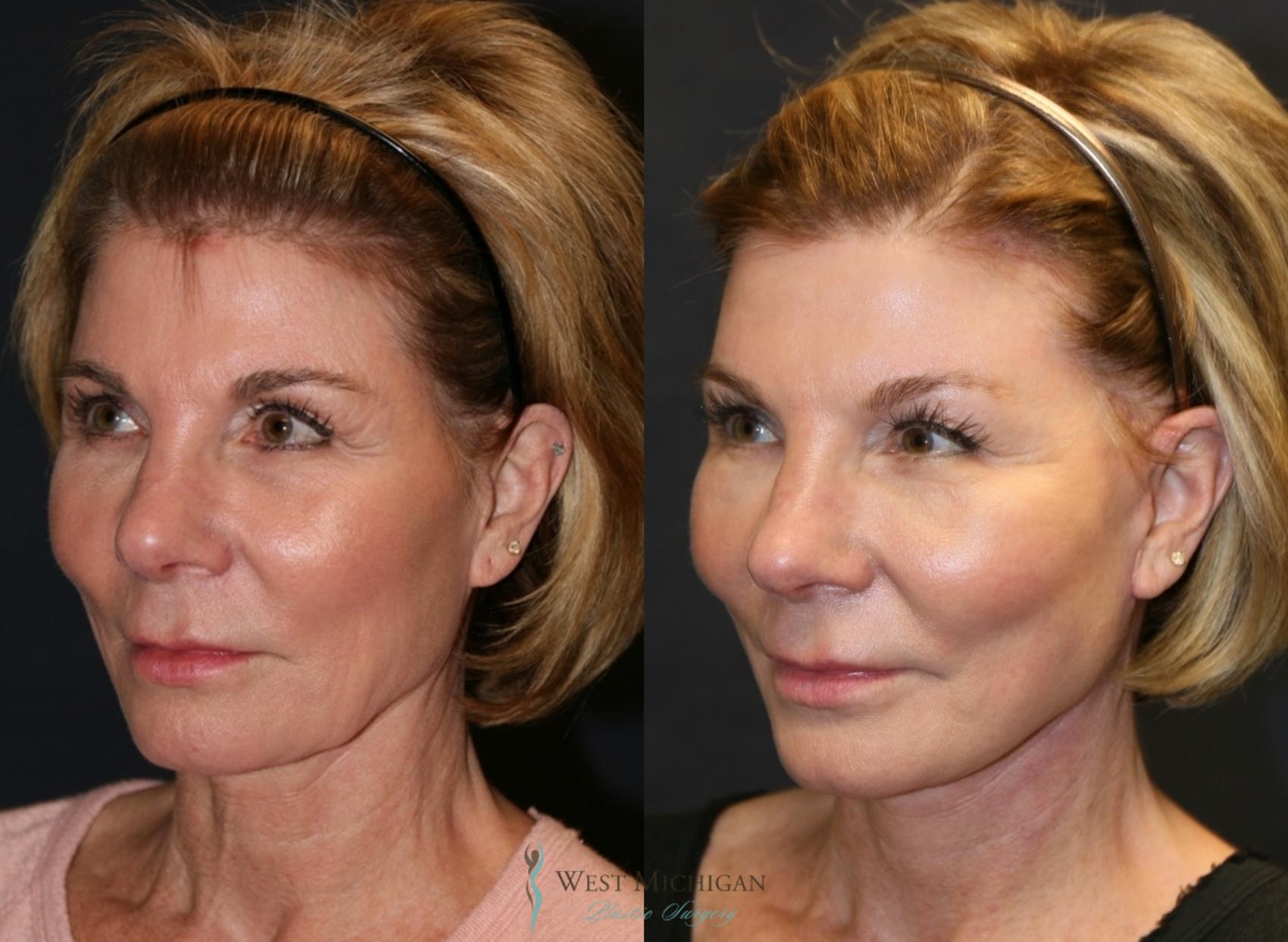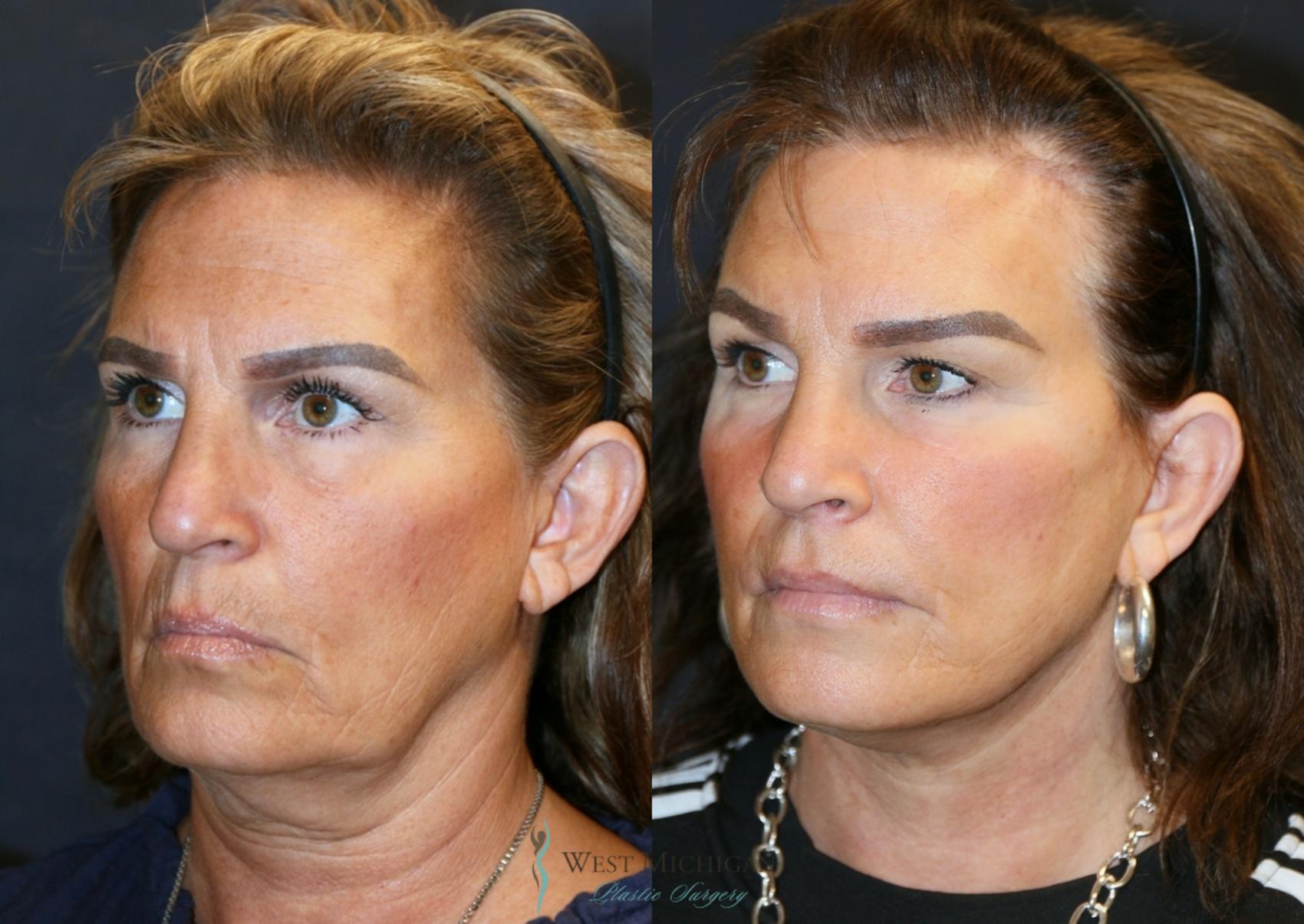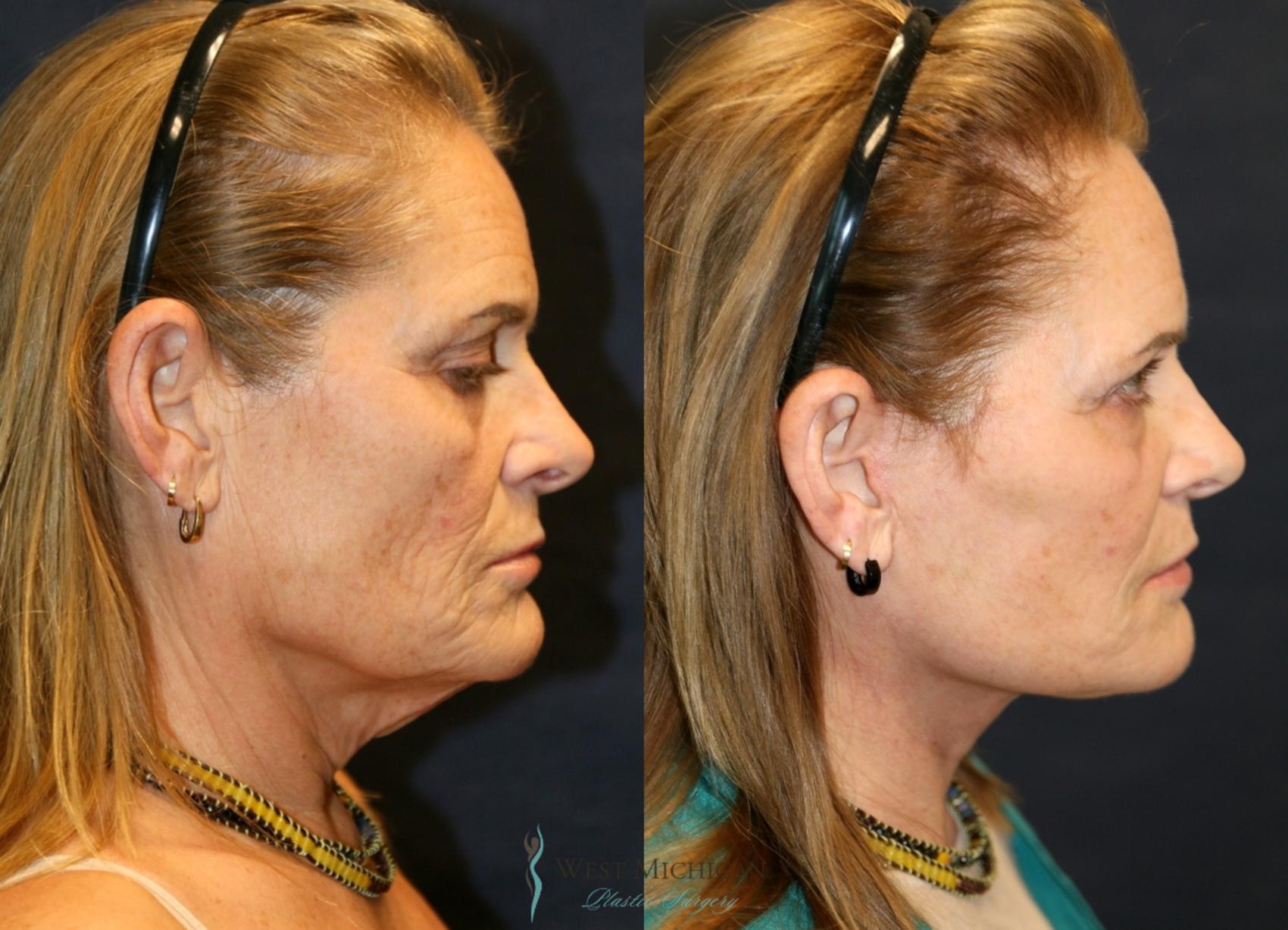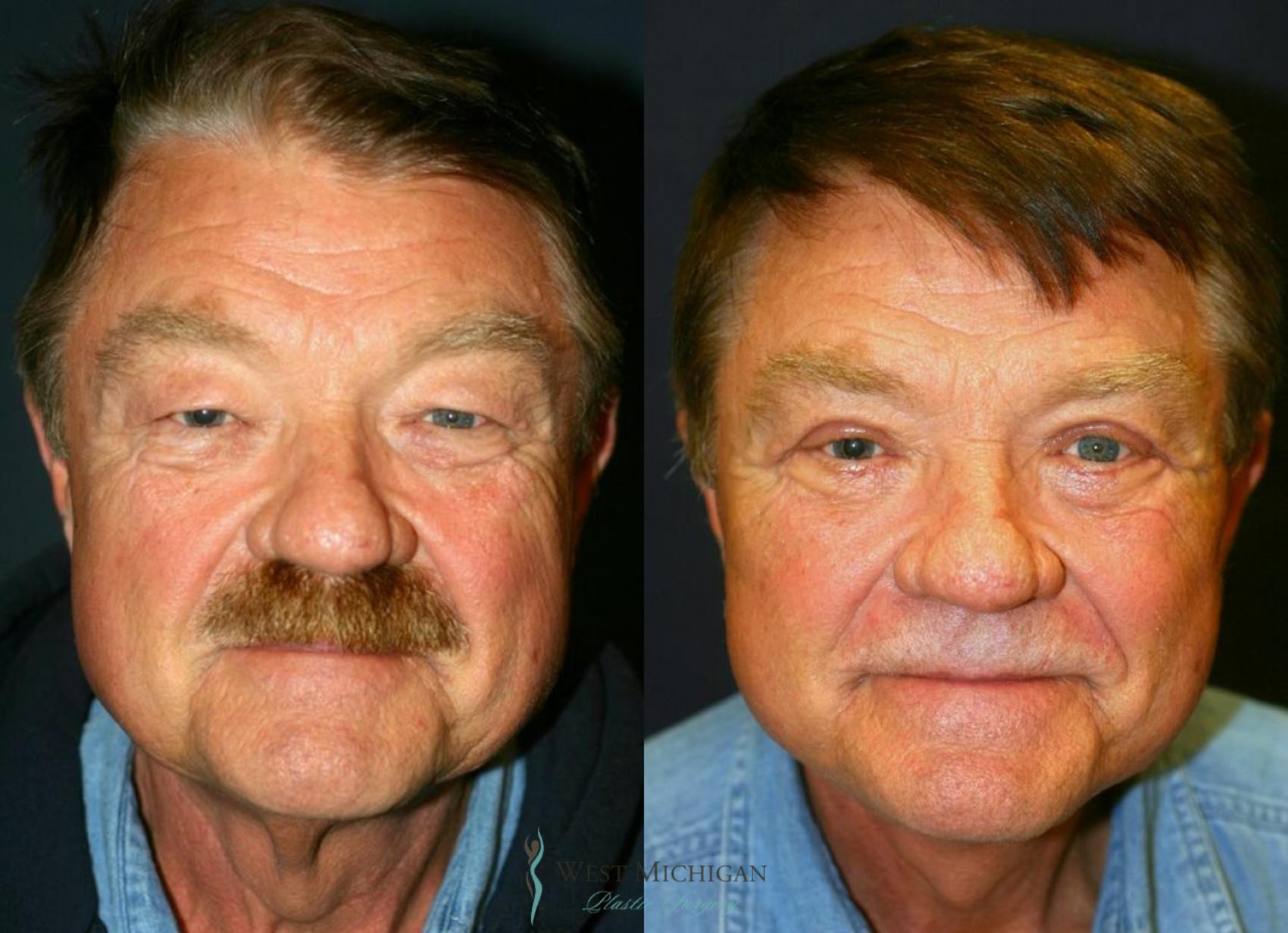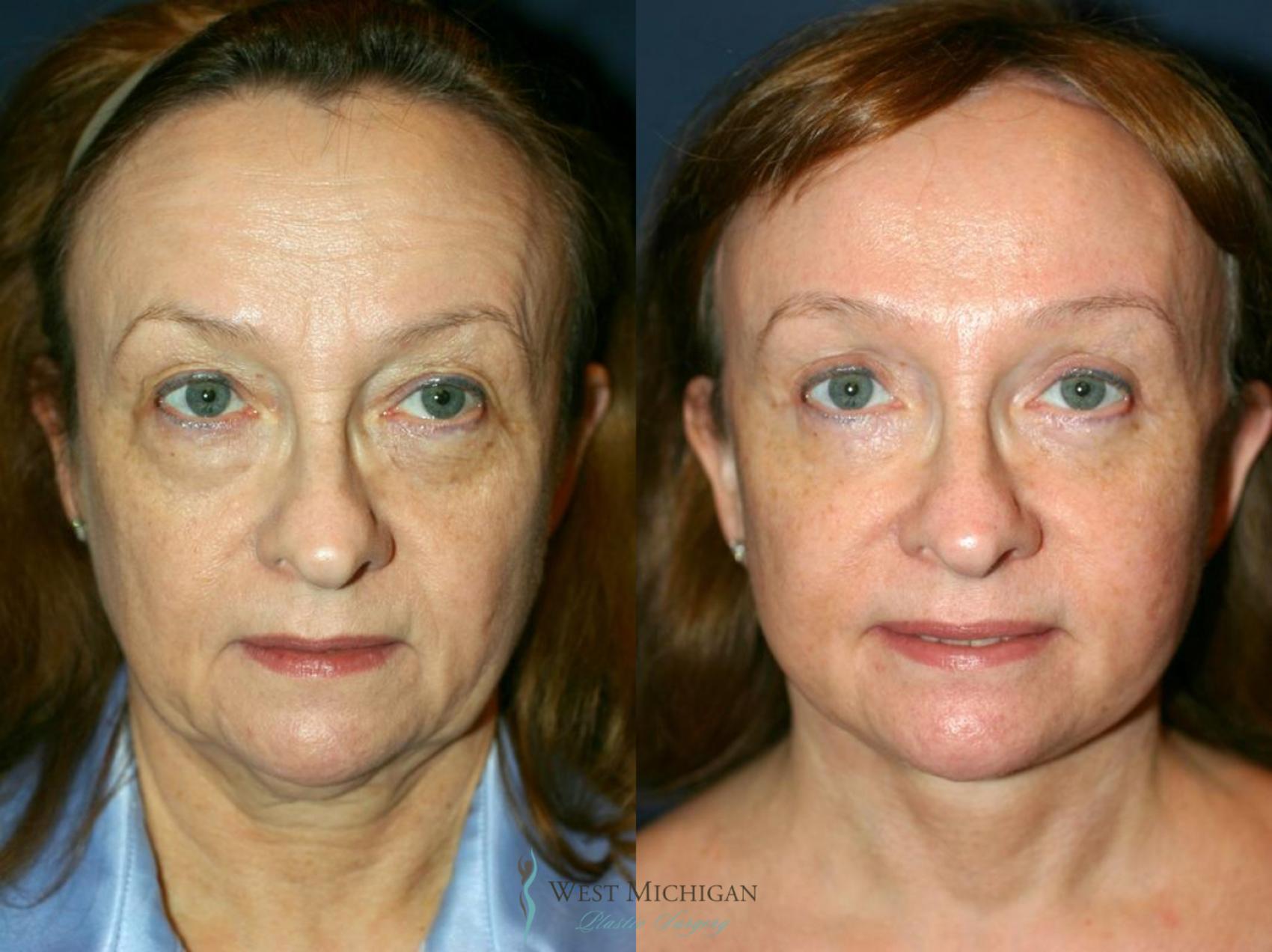West Michigan Plastic Surgery
8175 Creekside Drive, Suite 100
Portage, MI 49024
Phone: (269) 222-1611
Monday–Thursday: 8 a.m.–5 p.m.
Friday: 8 a.m.–4 p.m.
West Michigan Plastic Surgery
3035 Capital Ave SW, Suite 110
Battle Creek, MI 49015
Phone: (269) 222-1611
Tuesday: 8 a.m.–5 p.m.
Friday: 12:30 p.m.–4 p.m.
Refresh And Rejuvenate Your Face
When it comes to facial rejuvenation, the facelift has been the ‘gold standard’ for many years. Despite the rise of non-invasive facial rejuvenation treatments, facelift surgery has an enduring appeal. Like most medical procedures, facelift surgery has evolved and improved over the years thanks to advances in techniques and technology, so results now look more natural than ever.
The facelift is an artful procedure that board-certified plastic surgeon Dr. Scott Holley has mastered, so he is able to create attractive, natural-looking facelift results for patients in Kalamazoo and Grand Rapids. Dr. Holley’s goal is not to make you look different, but to make you look like a refreshed version of yourself.
What Is A Facelift?
A facelift or rhytidectomy is a surgical procedure that is done to reduce signs of aging on the face and neck and give the face a more youthful appearance. A facelift addresses side-effects of the aging process such as sagging skin, deep folds around the nose and mouth, and loose skin of the neck.
A rhytidectomy is often done in conjunction with other rejuvenation procedures such as a brow lift or eyelid lift, to further enhance results.
Candidates For A Facelift
Individuals with signs of aging in the lower two-thirds of the face such as sagging skin, creases around the nose and mouth, and shifting facial fat, are good candidates for a facelift. Each patient is unique. Some show more aging in the face, others more in the neck. Regardless, a face/neck lift will address both. While there is literally no age limit to having a facelift, you should be in good overall health, a non-smoker, and have realistic expectations regarding surgery.
Your Consultation
During your consultation, Dr. Holley will discuss your aesthetic goals and reasons for wanting a facelift. He will also evaluate your medical history and determine the approach that would be most suitable based on your specific concerns, and the degree of correction required. This is the time to raise any and all questions related to your facial aging. Dr. Holley can create a plan to overcome specific concerns of the lower face and neck or craft a complete facial rejuvenation strategy to also address any concerns of the eyes and brow.
How Does It Work?
Rhytidectomy is carried out under general anesthesia and takes about 3-4 hours. There are different surgical techniques that can be used to perform a facelift including the traditional facelift and the neck lift.
The traditional facelift addresses the mid to lower face. The incision typically starts at the temples in the hairline, continues in front of the ear and then behind the earlobe. The procedure involves repositioning underlying tissue in the jowls and neck, redistributing fat on the face, and lifting or plicating the underlying support tissue of the face, called SMAS. When the facial recontouring is complete, the skin is redraped and the incisions closed.
A neck lift focuses on sagging skin in the lower half of the face and neck, as well as excess fat below the chin. The neck is approached through the facelift incisions around the ears and a small incision below the chin. It involves tightening the underlying neck muscles and removing excess fat.
Incisions for facelift surgery are carefully placed to minimize the appearance of scars.
Facial fat grafting may also be recommended to fill a “deflated” look in the mid-face and around the mouth.
Results
Improvements will be noticeable within a few days once swelling and bruising subside. Your face will look more youthful and refreshed after facelift surgery. Often the most dramatic changes involve the neck and jawline. Those that maintain a healthy lifestyle can expect results to last 10-20 years.
Recovery
Most people experience some bruising, soreness, and swelling after a rhytidectomy. Most are surprised that discomfort is minimal, typically lasting only 48 hours. Recovery time ranges from 1-3 weeks depending on the extent of the procedure. During the healing process, you should refrain from bending, lifting, and strenuous activities for 7-10 days.

